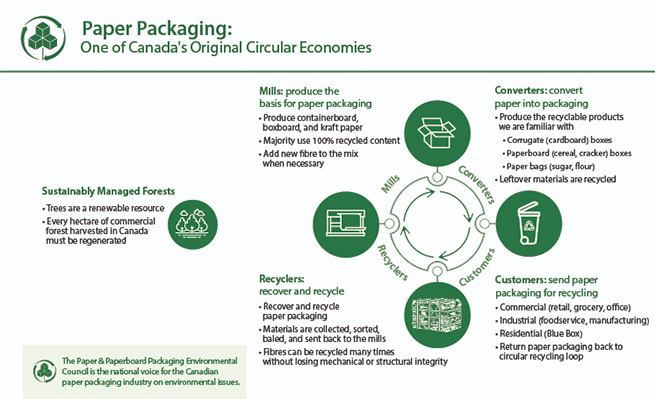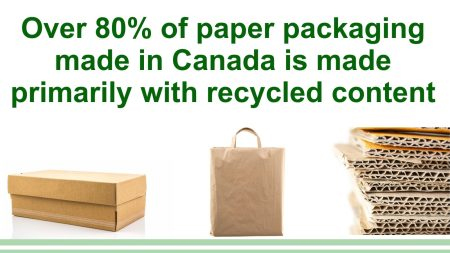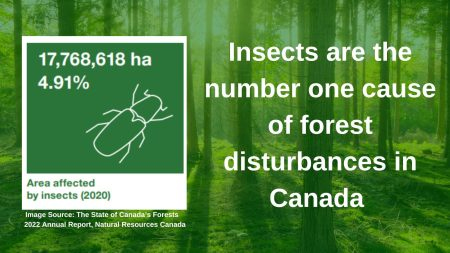The Paper and Paperboard Packaging Environmental Council (PPEC) has enjoyed celebrating National Forest Week, which is taking place this week (September 17-23, 2023), as the sustainable management of Canada’s forests is fundamental to PPEC members and the circular economy of the paper packaging industry.
Environmental sustainability is at the core of PPEC member company operations, and using recycled content is an inherent part of the Canadian paper packaging industry’s business model. And yet, misconceptions surrounding forestry and paper packaging persist when it comes to how paper packaging is made.
In Canada, the major paper packaging grades – containerboard (used to make corrugated boxes), boxboard (used to make boxboard cartons, i.e., cereal boxes), and kraft paper (used to make paper bags) – are either made from recycled, virgin, or blended pulp (a mix of the two).
While most paper packaging made in Canada is made primarily with recycled content – over 80% according to PPEC’s recent 2022 Recycled Content Survey – the paper fibres it was originally made from came from a tree.
However, the Canadian paper packaging industry doesn’t use much in the way of freshly cut trees, and the little that is harvested must be successfully regenerated by Canadian law; while the paper fibres that are used by PPEC member mills are verified to be responsibly sourced by independent, third-party forest certification organizations.
The Canadian government conserves and protects its forests through strict laws and science-based sustainable forest management practices, which stipulate that all areas harvested on public land (about 90% of Canada’s forests are on public land) must be reforested, either by tree replanting or through natural regeneration (which occurs when new seedlings or sprouts are produced by fallen trees).
According to the latest data from Natural Resources Canada’s State of Canada’s Forests Annual Report, in 2020, the total forest harvest for all lumber (which includes market pulp, packaging, tissue, newsprint, and printing and writing paper) represented 0.2% of Canada’s forest land.
There is also an important distinction between harvesting and deforestation. Deforestation is when forest land is permanently cleared, with trees being removed so that the land can be used for another purpose. In 2020, deforestation accounted for 49,352 hectares of area permanently changed, primarily by the agriculture, mining, oil and gas, and built-up (new homes, ski hills, and golf courses) sectors, which together represent 96% of deforestation in Canada.
Insects represented the largest cause of disturbance to Canada’s forests with 17.7 million hectares of area defoliated in 2020.
As we celebrate National Forest Week, it is important to understand that when we manage Canada’s forests through the lens of conservation and protection, through careful harvesting and replanting, and through the lens of climate change, as trees capture and store carbon acting as either carbon sources or carbon sinks, we are supporting a healthy forest ecosystem.
It is also important to understand that when we use, reuse, and recycle paper-based packaging, we all play a role in protecting and replenishing our renewable resources, supporting the sustainable management of Canada’s forests, and contributing to the circular economy of the paper-based packaging industry.

 Rachel Kagan
Rachel Kagan
Executive Director
The Paper & Paperboard Packaging Environmental Council (PPEC)















